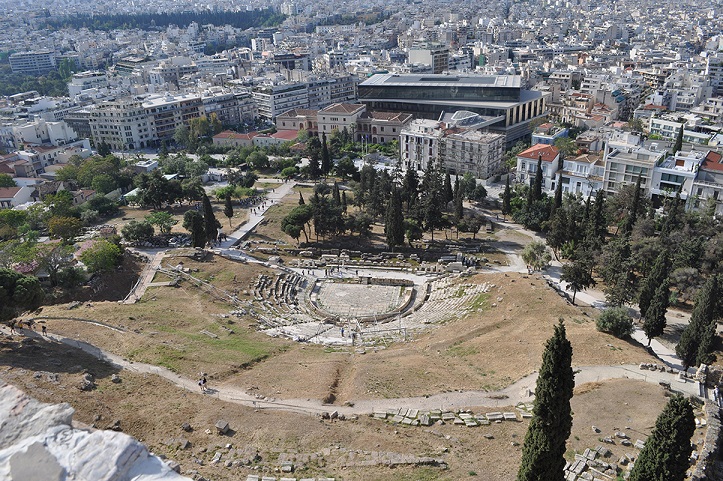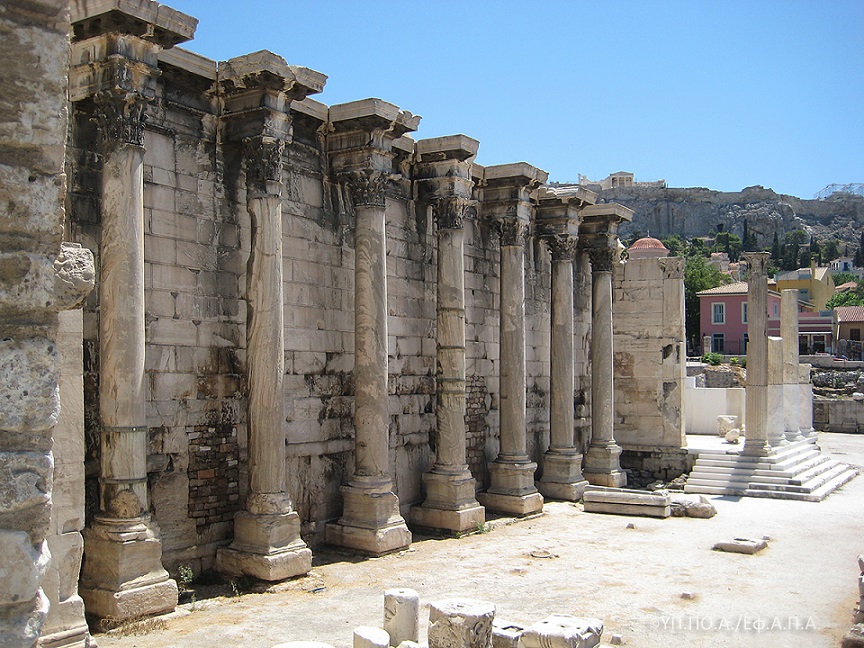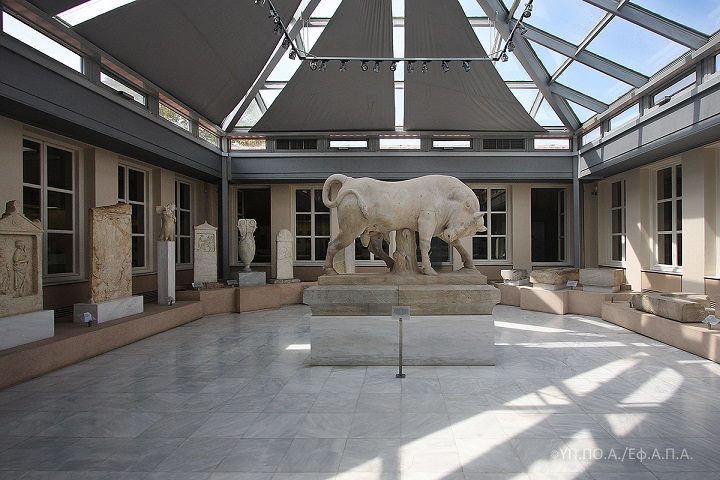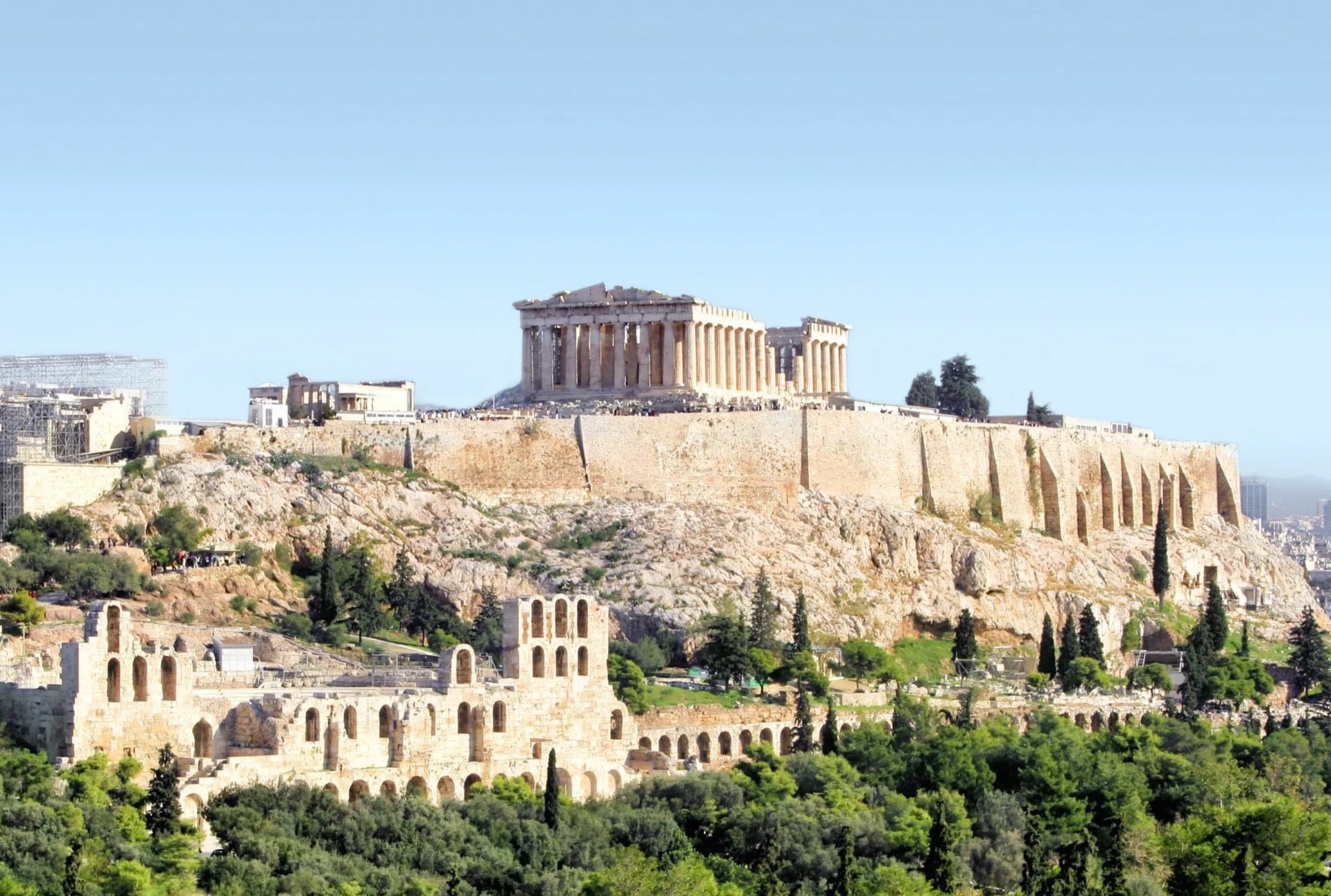
Athena's Combined Ticket
Attica & Central Greece
The ticket includes 7 Sites and Monuments of Athens.

Acropolis & Slopes
The Acropolis rock with its characteristic trapezoidal shape, dominates the city of Athens, at an altitude of 157 m. The uncovering and restitution of its monuments has been gradually accomplished, since 1834. The main visible monuments of the archaeological site were built during the Classical period, in the second half of the 5th c. B.C., in the framework of the Periclean building program. It is about the Propylaia, the monumental entrance of the classical Acropolis, the Parthenon, doric temple dedicated to goddess Athena and major achievement of the ancient Greek architecture, the Erechtheion, in whose interior space very ancient cults and memories of the city were hosted, and the ionic temple of Athena Nike on a prominent position to the south of Propylaia.
Cults devoted to fertility and vegetation performed in open-air sanctuaries and cavernous openings in the rock developed on the North Slope. Among the site's most important monuments are the Klepsydra spring, the three caves dedicated to the cults of Apollo, Zeus and Pan and the Sanctuary of Aphrodite and Eros. A monumental cave dedicated to the nymph Aglauros dominates the East Slope. From the archaic times on, the establishment of important sanctuaries and theatrical buildings on the south side [South Slope] of the Acropolis gave great religious, cultural and spiritual significance. Among the site's most important monuments are the Sanctuary of Asclepios, the Sanctuary and the Theatre of Dionysus Eleuthereus. In the 2nd century A.D., on the western edge of the area, Herodes Atticus built the magnificent Odeion in memory of his wife, Regilla.

Ancient Agora
The Agora was the center of Athenian democracy, where the city's most important political functions were exercised and where both Pericles and Socrates once walked. The ruins of the ancient Agora, the exceptionally well-preserved temple of Hephaistos and the restored Stoa of Attalos may be visited in the shadow of the Acropolis at a site characterized by particular natural beauty.

Hadrian's Library
The magnificent building of the Library was built during the third visit of Emperor Hadrian in Athens during 131-132 A.D. The Library was a rectangular peristyle structure with interior courtyard [122X82m.] with four stoas one on each side. It had only one entrance through a monumental gateway, propylon on its western side, with four Corinthian order columns of Phrygian marble. Alongside the propylon on each side a marble wall was erected with seven columns of Corinthian order from Karystian marble. According to Pausanias travelogues the Library had on the interior a large oblong cinstern, one hundred columns of phrygian marble on each stoa and rooms decorated with alabaster roofs and paintings. In the central two-storey building of the eastern side, inside niches and wooden cupboards the books and papyrus was kept while on each corner of the same side a small lecture halls [auditoria] was built.
The form and the uses of the place which served as a place of art exhibition, lecture and also for the worship of the emperor and as a place of safekeeping the archive of the city allows us to interpete it as a multifunctional building or as imperial forum according to the well known other forum buildings of Rome.
The Library suffered severe damages from the Herulian invasion in A.D. 267, and it was later repaired by Herculius the Perfect of Illiricum [AD 407-412].
In the early 5th century AD, in the area of the interior courtyard of the Roman monument, an imposing tetranconch church with an atrium was built on its western side. This tetranconch church was destroyed in the late 6th century A.D. and converted in the second half of the 7th century A.D. into a three-aisled basilica. Atop its ruins there was built in the 11th century A.D. a Byzantine church known as the church of Megali Panaghia, which was demolished in 1885.
In the 12th century A.D., the Chalkokondylis family built a small church which was dedicated to Saint Asomatos [the Archangel Michael] adjoining part of the facade and the propylon of the Library. The church was demolished in 1843 and the only visible remains of the church are a wall and a wall painting on the LibraryΆs facade with depictions of the prayer at Gesthemane, Judas Betrayal of Christ and portraits of saints in bust form.

Kerameikos
The oldest and largest Attic cemetery extended outside the walls on the northwest outskirts of ancient Athens. The site is dominated by stately tombs with sculptural masterpieces. The Demosion Sema [public cemetery], a site for the burial of prominent war casualties, was in the same area. A small onsite museum houses important finds from the cemetery.

Aristotle's School [Lyceum]
According to ancient testimonies, Lykeion was an idyllic grove, lying east of the city. The sanctuary of Apollo Lykeios seems to have given its name to the area.
The foundations of the Lykeion palaestra, where athletes trained in wrestling, boxing and pankration were laid in the second half of the 4th century BC. The complex was preserved with repairs, for some seven hundred years, until the early 4th century AD.
Aristotle founded his own School in the Lykeion in 335 BC and taught there over a period of about twelve years, the most productive period of his life.
![Aristotle's School [Lyceum]](https://etickets.tap.gr/webengines/images/places/000000007/cnt_lykeio.jpg)
Olympieion
The construction of the temple of Olympian Zeus, one of the largest temples in the ancient world, was launched possibly around 515 BC, but it was completed by Hadrian in 131/132 AD

Roman Agora
The Roman Agora was built in the 1st c. BC with gifts from Julius Caesar and Augustus to house Athens' commercial activities. The Agora is bordered by the imposing Gate of Athena Archegetis, while the Clock of Kyrrestos with relief figures of the eight winds and the Fethiye Mosque stand at its corners.


